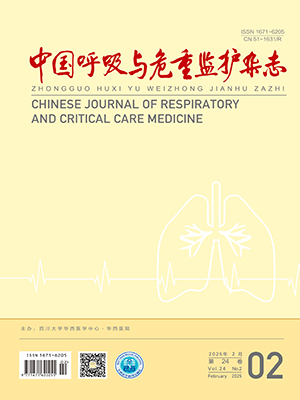| 1. |
Donnelly LE, Barnes PJ. Defective phagocytosis in airways disease. Chest, 2012, 141(4): 1055-1062.
|
| 2. |
Berenson CS, Garlipp MA, Grove LJ, et al. Impaired phagocytosis of nontypeable haemophilus influenzae by human alveolar macrophages in chronic obstructive pulmonary disease. J Infect Dis, 2006, 194(10): 1375-1384.
|
| 3. |
Taylor AE, Finney-Hayward TK, Quint JK, et al. Defective macrophage phagocytosis of bacteria in COPD. Eur Respir J, 2010, 35(5): 1039-1047.
|
| 4. |
Fitzpatrick AM, Holguin F, Teague WG, et al. Alveolar macrophage phagocytosis is impaired in children with poorly controlled asthma. J Allergy Clin Immunol, 2008, 121(6): 1372-1378.
|
| 5. |
Steinkamp JA, Wilson JS, Saunders GC, et al. Phagocytosis: flow cytometric quantitation with fluorescent microspheres. Science, 1982, 215(4528): 64-66.
|
| 6. |
Pitz AM, Perry GA, Jensen-Smith HCA, et al. A flow cytometric assay to quantify in vivo bacterial uptake by alveolar macrophages. J Microbiol Methods, 2010, 81(2): 194-196.
|
| 7. |
Inoue M, Ishibashi Y, Nogawa H, et al. Carbocisteine promotes phagocytosis of apoptotic cells by alveolar macrophages. Eur J Pharmacol, 2012, 677(1-3): 173-179.
|
| 8. |
金齐力, 姜丽娜, 姚春艳, 等. 流式细胞术检测单核巨噬细胞吞噬荧光素标记结核分枝杆菌的方法学探讨. 蚌埠医学院学报, 2008, 33(5): 505-508.
|
| 9. |
王爱清, 万建美, 彭丽, 等. 流式细胞术检测大鼠肺泡巨噬细胞吞噬功能方法探讨. 激光杂志, 2014, 35(1): 39-41.
|
| 10. |
李煜, 齐丽娟, 迈一冰, 等. 比较流式细胞术和鸡红细胞法检测小鼠腹腔巨噬细胞吞噬功能. 毒理学杂志, 2012, 26(2): 133-135.
|
| 11. |
Kendall CG, Stockton AM, Leicht S, et al. Amine analysis using AlexaFluor 488 succinimidyl ester and capillary electrophoresis with laser-induced fluorescence. J Anal Methods Chem, 2015, 2015: 368362.
|
| 12. |
Lindhoud S, Westphal AH, Visser AJ, et al. Fluorescence of Alexa Fluor dye tracks protein folding. PLoS One, 2012, 7(10): e46838.
|
| 13. |
陈亚东, 陆罗定, 俞萍, 等. 流式细胞术检测小鼠腹腔巨噬细胞吞噬能力的方法学探讨. 中国免疫学杂志, 2014, 8(30): 1074-1077.
|




